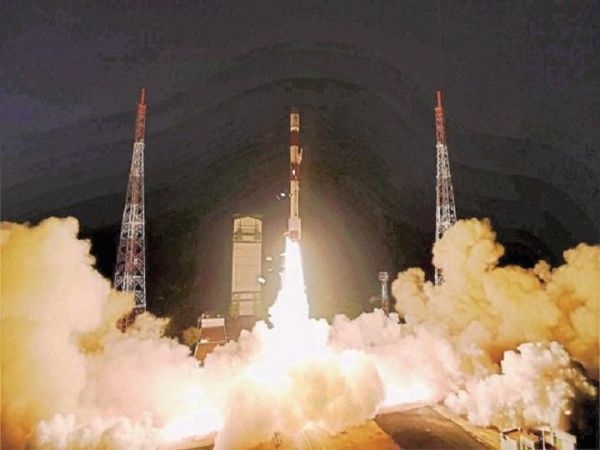
In the early hours of Wednesday, India's latest communication satellite GSAT-31 was successfully launched by European launch services provider- Arianespace rocket from French Guiana. A French territory located in the northeastern coast of South America blasting off from Ariane Launch Complex at Kourou, at 02.31 am (IST), the Ariane-5 vehicle-injected GSAT-31 into the orbit in a flawless flight lasting about 42 minutes.
Indian Space Research Organisation's (ISRO) Satish Dhawan Space Centre (SDSC) Director S Pandian soon after the launch said at Kourou that "It gives me great pleasure on the successful launch of GSAT-31 spacecraft onboard Ariane-5, this is the third mission for ISRO in 2019," he further added that "Congratulation to Arianespace on the successful launch and precise injection of the satellite into the orbit,".
However Arianespace CEO Stephane Israel tweeted, "2019 is off to a roaring start for #Arianespace! Flight #VA247, carrying Saudi Geostationary Satellite 1/Hellas Sat 4 and GSAT-31, is a confirmed success that underscores our leadership position in the geostationary launch market. @KACST #HellasSat @ISRO @LockheedMartin."
Weighing about 2,535 kg, the GSAT-31 will provide continuity to operational services on some of the in-orbit satellites. As per ISRO information, GSAT-31 is the country's 40th communication satellite which is configured on ISRO's enhanced 'I-2K Bus', utilising the maximum "bus capabilities" of this type. This satellite will augment the Ku-band transponder capacity in Geostationary Orbit.
The satellite derives its heritage from ISROs earlier INSAT/GSAT satellite series, the space agency said, adding that it provides Indian mainland and island coverage. With a mission life of around 15 years, GSAT-31 will be used for supporting VSAT networks, Television uplinks, Digital Satellite News Gathering, DTH-television services, cellular backhaul connectivity and many such applications. It also provides wide beam coverage to facilitate communication over large oceanic region, comprising large parts of Arabian Sea, Bay of Bengal and Indian Ocean, using a wide band transponder.